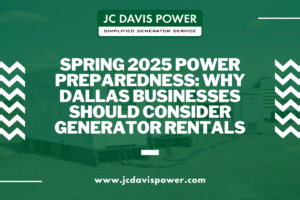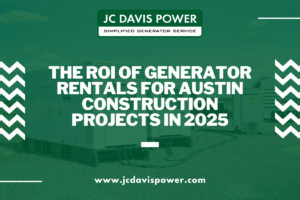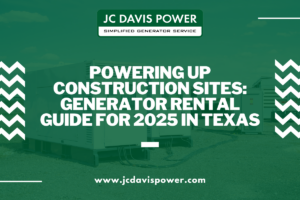Key Takeaways
- Event lighting design mixes different types of lighting to create the right mood.
- LED lighting systems are energy-efficient, can change colors, and work with smart controls.
- Wireless control systems allow for easy lighting changes during events.
- Specialized lighting is designed for specific events like weddings and corporate functions.
- Outdoor lighting needs weatherproof equipment and good integration with the landscape.
- Technical planning includes choosing the right equipment, safety measures, and managing the budget.
- Sustainable practices help reduce environmental impact while still providing quality lighting.
Basics of Event Lighting Design
Event lighting design is the practice of creating beautiful visual spaces that enhance the atmosphere of special occasions. By understanding the basics of lighting design, event planners can turn simple venues into memorable places that guests will love.
Key Lighting Concepts
To create effective event lighting, it’s important to understand three main types of lighting:
- Ambient lighting: This is the general light that fills the space and sets the mood.
- Task lighting: This focused light serves specific needs, like lighting a buffet or reading area.
- Accent lighting: This highlights specific features or adds visual interest, such as artwork or decorations.
Good lighting design uses these concepts in smart ways, like:
- Uplighting: Placing lights on the floor to shine on walls or architectural features.
- Downlighting: Using overhead lights to shine down for general illumination.
- Spotlighting: Direct beams that focus on specific areas or objects.
By combining these techniques, designers can create unique atmospheres that match the event’s theme. For example, a corporate event might use bright, cool lighting for a professional feel, while a wedding might use soft, warm lights for a romantic vibe.
Understanding Technical Requirements
Knowing the technical side of lighting equipment is key to making it work well. Here are some important factors to consider:
- Power consumption: Measured in watts, this tells you how much energy your lights will use.
- Color temperature: Measured in Kelvin (K), this shows how warm or cool the light appears. Lower numbers (2700-3000K) mean warm light, while higher numbers (5000-6500K) mean cool, daylight-like light.
- Brightness: Measured in lumens, this indicates how much light a fixture gives off.
| Color Temperature | Description | Common Use |
|---|---|---|
| 2700-3000K | Warm White | Intimate settings, restaurants |
| 3500-4000K | Cool White | Office spaces, retail stores |
| 5000-6500K | Daylight | Outdoor events, photography |
Using brightness control systems like dimmers and DMX controllers allows for precise adjustments of light intensity and color, making it easy to change the atmosphere during an event.
Modern Lighting Technologies
New lighting technologies have changed the event lighting scene, providing more options, efficiency, and creative potential.
Benefits of LED Lighting
Light Emitting Diode (LED) technology is a popular choice for event lighting because of its many benefits:
- Energy efficiency: LEDs use much less power than traditional lights, saving on energy costs and being better for the environment.
- Color-changing abilities: Many LED lights can create lots of colors without needing different gels or filters.
- Smart control systems: LEDs can easily connect to digital controls for precise lighting adjustments.
LED lights are especially flexible for events, allowing for quick changes in color to match different parts of an event or create stunning visual displays.
Advantages of Wireless Control
Modern event lighting often uses advanced wireless control systems that are very user-friendly:
- DMX controllers: These let you control many lights from one device.
- Remote control features: Wireless technology allows lighting technicians to operate everything from a tablet or smartphone, making it easier to move around.
- Programming options: Advanced systems let you set up pre-planned lighting effects, making transitions during the event smooth.
These wireless systems reduce the need for messy cables, making setup faster and safer.
Lighting for Different Events
Different types of events need specific lighting to create the right atmosphere and meet their needs.
Wedding Reception Lighting
Wedding lighting is all about creating a romantic and unforgettable environment. Key features include:
- Soft, warm lights to enhance intimacy.
- Uplighting on walls or drapes to add color and depth.
- Pin spotting on centerpieces or the wedding cake for emphasis.
- Dynamic dance floor lighting to energize the crowd.
A popular trend is using fairy lights or string lights to create a magical, starry effect in both outdoor and indoor venues.
Corporate Event Lighting
Corporate events require a more professional lighting approach that aligns with brand values:
- Logo projections using gobo lights to reinforce brand identity.
- Stage lighting to ensure speakers are clearly visible.
- Color-coordinated lighting to match company colors or event themes.
- Accent lighting on product displays or networking areas.
Effective corporate lighting balances professionalism with creativity, enhancing the experience without losing a business-like feel.
Outdoor Event Lighting Solutions
Lighting for outdoor events poses unique challenges but also provides special opportunities.
Using Weather-Resistant Equipment
When planning outdoor lighting, it’s vital to choose equipment that can handle the weather:
- IP-rated fixtures: Look for lights that have ratings to resist water and dust.
- Temporary setups: Use strong, portable lights and secure all equipment against wind and other weather issues.
- Safety measures: Implement proper grounding and use GFCI (Ground Fault Circuit Interrupter) protection for electrical connections.
Blending with the Landscape
Integrating lights with the natural surroundings can create amazing effects:
- Lighting trees and plants: Uplighting trees or using fairy lights can transform outdoor spaces.
- Pathway lights: Guide guests safely while creating a magical atmosphere.
- Highlighting features: Use lights to emphasize buildings or natural features.
By combining lighting with the landscape, event designers create immersive outdoor experiences that guests will love.
Planning and Implementing Lighting
Successful event lighting requires careful planning and execution to ensure everything runs smoothly.
Choosing the Right Equipment
Selecting the correct equipment is crucial for achieving the right lighting effects:
- Rental vs. purchase: Decide whether to rent or buy equipment based on how often you’ll use it and your budget.
- Compatibility: Ensure all lighting fixtures and control systems work well together.
- Backup systems: Always have backup power sources and extra equipment ready in case of problems.
Installation and Safety
Proper setup and safety measures are essential:
- Installation procedures: Follow manufacturer guidelines and industry best practices.
- Safety regulations: Adhere to local fire and electrical codes and obtain necessary permits.
- Emergency plans: Have clear procedures for handling power failures or equipment issues.
Budgeting and Resource Management
Careful budget planning and resource management are key to achieving great lighting while staying within financial limits.
Cost Considerations
When budgeting for event lighting, keep these factors in mind:
- Equipment rental costs: Compare rates from different vendors.
- Installation labor: Account for the time and expertise needed for setup and teardown.
- Energy costs: Estimate potential electricity expenses, especially for larger or longer events.
Sustainable Practices
Using eco-friendly lighting can reduce environmental harm and save money:
- Energy-efficient lights: Choose LED and other low-energy options.
- Smart control systems: Automate controls to optimize energy use during the event.
- Resource management: Design lighting setups that maximize impact while using fewer fixtures.
Special Effects and Enhancements
Adding advanced lighting techniques and special effects can make events truly unforgettable.
Custom Gobo Projections
Gobo projections are a creative way to personalize lighting:
- Logo displays: Project company logos or event branding on walls or floors.
- Pattern designs: Use custom patterns to enhance the event theme or create visual interest.
- Motion effects: Incorporate moving gobos for dynamic visual displays.
Dynamic Lighting Effects
Advanced lighting effects can change the entire event experience:
- Color coordination: Sync lighting colors with music or the event schedule for a cohesive feel.
- Motion programming: Use moving head fixtures to create exciting light shows.
- Interactive features: Implement sound-reactive or motion-sensor lighting for engaging experiences.
By using these advanced techniques, lighting designers can create immersive environments that elevate any special occasion.
Conclusion
Customized lighting solutions play a crucial role in successful events, turning regular spaces into extraordinary experiences. By understanding the basics of lighting design, using modern technology, and tailoring solutions to specific needs, planners can create visually stunning and emotionally engaging environments. From the warm glow of a wedding to the professional look of a corporate event, thoughtful lighting design is key to creating memorable moments.
As you plan your next event, remember that the right lighting can truly make a difference. Consider working with skilled lighting professionals who can help bring your ideas to life. For high-quality lighting equipment and expert advice, visit JC Davis Power to learn how their portable LED light towers can enhance your next special event with style and efficiency.
1. What types of special events can your portable LED light towers accommodate?
Our portable LED light towers are perfect for weddings, corporate functions, outdoor festivals, and private parties. They adapt to any theme or venue.
2. How quickly can you set up lighting for an event?
Setup times vary based on the complexity of the design but typically range from 1-3 hours with our expert team handling everything efficiently.
3. What area can one LED light tower effectively illuminate?
One tower can cover up to 10,000 square feet depending on the brightness settings and placement within the venue.
4. Do you offer different lighting configurations based on event type?
Yes! We customize lighting setups to match the specific needs and themes of each event—whether it’s romantic uplighting for a wedding or dynamic effects for a concert.
5. Are the light towers weather-resistant for outdoor events?
Absolutely! Our equipment is IP-rated to withstand rain and dust, ensuring reliable performance in all weather conditions.





